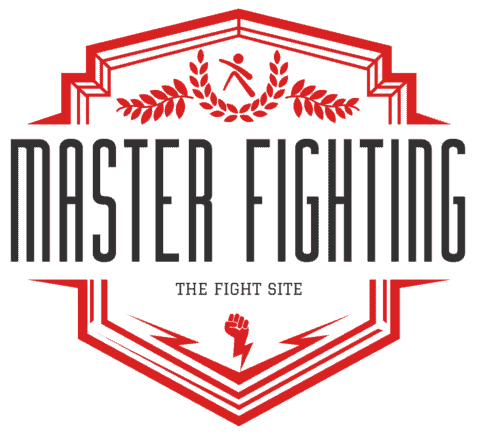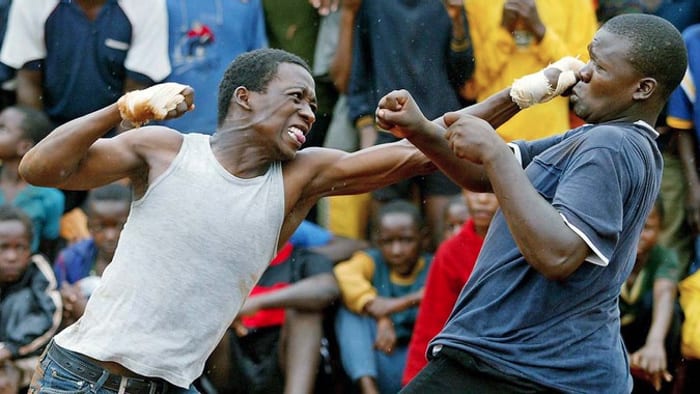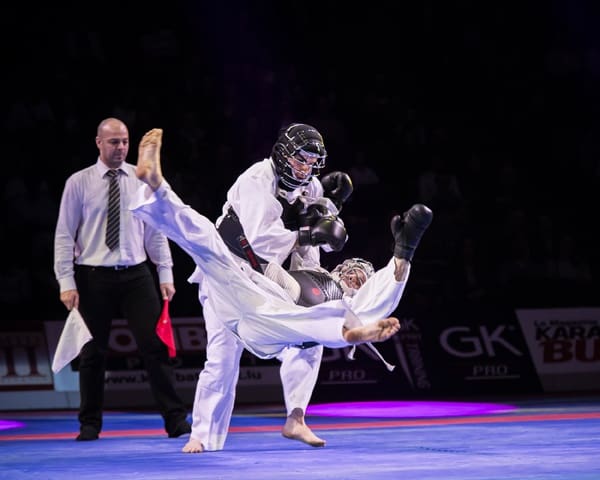Hankido The Korean Martial Art Developed By Myung Jae-Nam
The Legacy of Hankido
Martial arts have been an integral part of Korean culture for centuries. From ancient times, Korea has seen the rise and fall of many dynasties, each with its own traditions and styles when it comes to martial arts. In today’s era, martial arts play a significant role in Korea’s global cultural identity.
One of the lesser-known Korean martial arts is Hankido – a discipline that was developed by Myung Jae-Nam in the mid-20th century. Myung Jae-nam was born in 1938 in Kangnung, Gangwon Province, South Korea.
He started learning martial arts at a young age from his father and uncle, who were both accomplished practitioners themselves. He began his formal training in Hapkido (a traditional Korean martial art) at 14 years old under Yong-Sul Choi – another famous figure in Korean martial arts history.
After years of dedicated practice and study under various mentors, Myung Jae-Nam developed his own unique style which he named “Hankido”. Hapkido combines elements of Hapkido, Aikido (a Japanese martial art), and other Eastern philosophies into one cohesive system that emphasizes fluidity and grace over brute force.
It is known for its circular movements and joint-lock techniques designed to immobilize opponents without causing serious harm. Myung Jae-nam’s approach to teaching Hankido was highly individualized; he believed that every student should be allowed to progress at their own pace while striving towards their own personal goals within the art form.
The Philosophy of Hankido
The meaning behind the name “Hankido”
Hankido is composed of three Korean words: “Han” (한), meaning Korea or Korean; “Ki” (기), meaning energy; and “Do” (도), which means the way or path. Therefore, Hankido can be translated as “the Korean martial art of energy.” The term energy refers to the Ki, which is believed to be a vital force that flows within every living person.
Myung Jae-Nam, the developer of Hankido, believed that by practising this martial art, individuals could refine their Ki and strengthen their bodies and minds. This philosophy is based on the belief that when an individual’s Ki is flowing smoothly and harmoniously, they are better able to cope with stressors in life and maintain optimal physical health.
The principles and values that guide practitioners of Hankido
Hankido incorporates several core principles designed to guide practitioners in their practice. These include respect for oneself, others, and nature, humility in acknowledging one’s limitations while striving for self-improvement, perseverance in overcoming challenges, honesty in dealing with others and oneself, loyalty to one’s teacher and fellow practitioners, and a sense of community among practitioners. These principles are reflected in the training methods used in Hankido.
For example, bowing before entering or leaving practice areas or before sparring partners serves as a reminder of respect for oneself and others. Practitioners are encouraged to approach training with an open mind while being mindful of their limitations to cultivate humility.
Perseverance is built through repeated practice so that techniques become second nature. Honesty is fundamental as it allows individuals to identify areas where improvements are required accurately.
Loyalty fosters a sense of camaraderie among those who share similar goals. Understanding the philosophy behind Hankido is essential to appreciate martial art’s techniques and principles fully.
Hankido promotes the idea that refining one’s Ki and following the path of self-improvement results in a balanced and harmonious state of being, both physically and mentally. The principles of respect, humility, perseverance, honesty, loyalty, and community guide practitioners towards this goal.

Techniques and Training in Hankido
Basic movements and stances
In Hankido, basic movements and stances are emphasized as the foundation of the art. Practitioners learn how to properly stand, walk, turn, and pivot before they begin learning techniques.
The most important stance is called the “horse stance,” which is a squatting position that provides a stable base for executing techniques. Other stances include the long stance, short stance, and cat stance.
Joint locks, throws and strikes unique to Hankido
Hankido’s techniques are designed to redirect an attacker’s energy back onto themselves using circular motions that flow smoothly from one technique to another. Joint locks are common in Hankido and can be used to control an opponent by immobilizing their joints.
Throws are also a key component of Hankido’s arsenal; they allow practitioners to take an opponent off balance or throw them onto the ground. Strikes in Hankido focus on hitting vital points with precision rather than brute force.
Sparring and self-defence strategies
Hankido includes both sparring (or free-style fighting) as well as self-defence strategies. In sparring practice, practitioners use protective gear such as gloves, headgear, mouth guards, shin guards etc., while facing off against an opponent for timed rounds with specific rules regarding what moves can be executed during sparring sessions.
Self-defence strategies involve using joint locks, throws, strikes, kicks etc., learned in class against potential attackers outside of the class setting. This training is meant not only to prepare students for real-life encounters but also to build their confidence so that they can defend themselves if necessary.
Hankido training emphasizes basic movement patterns first followed by the utilization of various techniques including joint locks, throws, and strikes – all integrated into fluid motion aimed at neutralizing or subduing an attacker’s energy. Sparring and self-defence strategies round out the training, providing students with a well-rounded understanding of Hankido as a martial art.
The Role of Ki in Hankido
Explanation of Ki Energy and Its Importance in Martial Arts Practice
Ki energy, also known as Qi or Chi in Chinese martial arts, is the life force or energy that flows through all living things. It is said that Ki energy can be cultivated and harnessed to improve physical and mental health, as well as enhance martial arts practice.
In Hankido, the use of Ki energy is essential to achieving maximum effectiveness in techniques. Practitioners of Hankido are taught to focus on their breathing and cultivate a strong connection between their mind and body.
This allows them to access their Ki energy and use it to enhance the power, speed, and precision of their movements. By harnessing the power of their Ki energy, practitioners can perform techniques with greater ease and efficiency.
How Ki Is Incorporated into Techniques in Hankido
In Hankido, Ki is integrated into every aspect of training. From basic movements and stances to more advanced joint locks and throws, practitioners are trained to use their Ki energy for maximum effect. For example, when executing a throw, the practitioner visualizes using their Ki to unbalance their opponent before executing the technique.
Hankido also includes specific drills designed to help practitioners develop their ability to utilize their Ki energy effectively. These drills often involve partner work where both individuals focus on connecting with each other’s energy before performing techniques together.
Overall, the incorporation of Ki into techniques in Hankido allows for a deeper level of understanding and mastery over one’s body and movement. It emphasizes not just physical strength but also mental discipline and control over one’s thoughts and actions.
Applications Outside of Martial Arts
Benefits for Physical Health
Hankido is not just a martial art; it’s also an excellent form of exercise. By practising Hankido regularly, practitioners can improve their physical fitness, including their cardiovascular health and muscular strength. The various techniques used in Hankido can work out different parts of the body, making it a great all-around workout.
Practising joint locks, throws, and strikes helps to build muscle mass and increase flexibility. The footwork and stance training also help to improve balance and coordination.
Mental Benefits for Stress Management
In addition to the physical benefits of Hankido practice, there are also mental benefits. Many practitioners find that practising Hankido helps them manage stress better in their daily lives. The focus required during training helps clear the mind of other worries, while also providing a healthy outlet for any built-up tension or anxiety.
Use in Therapy for Those with Disabilities or Injuries
Hankido can also be used as a therapeutic tool for individuals with disabilities or injuries. Since it involves joint locks and throws that don’t rely on brute strength alone, people with limited mobility can still learn how to defend themselves effectively. Additionally, Hankido training can help those who have suffered from injuries or accidents to regain confidence in their bodies by relearning balance and movement techniques.
Conclusion
Myung Jae-nam’s creation of Hankido has brought many benefits beyond the world of martial arts practice. Not only does it provide an effective means of self-defence and overall physical fitness, but it has also been utilized as a therapeutic tool for those with disabilities or injuries.
Additionally, the mental focus required during training provides an outlet for stress management that can benefit anyone from all walks of life. Overall, the significance of Hankido goes beyond the martial arts world and has the potential to improve lives in many different ways.

Author Bio
Hi, I am William. I started out in martial arts with Goshin Ju Jitsu when I was 7 years old. I am passionate about martial arts and love sharing everything I learn. I created Master Fighting to become a resource for learning about martial arts and alternative fighting styles. Learn more about me.






